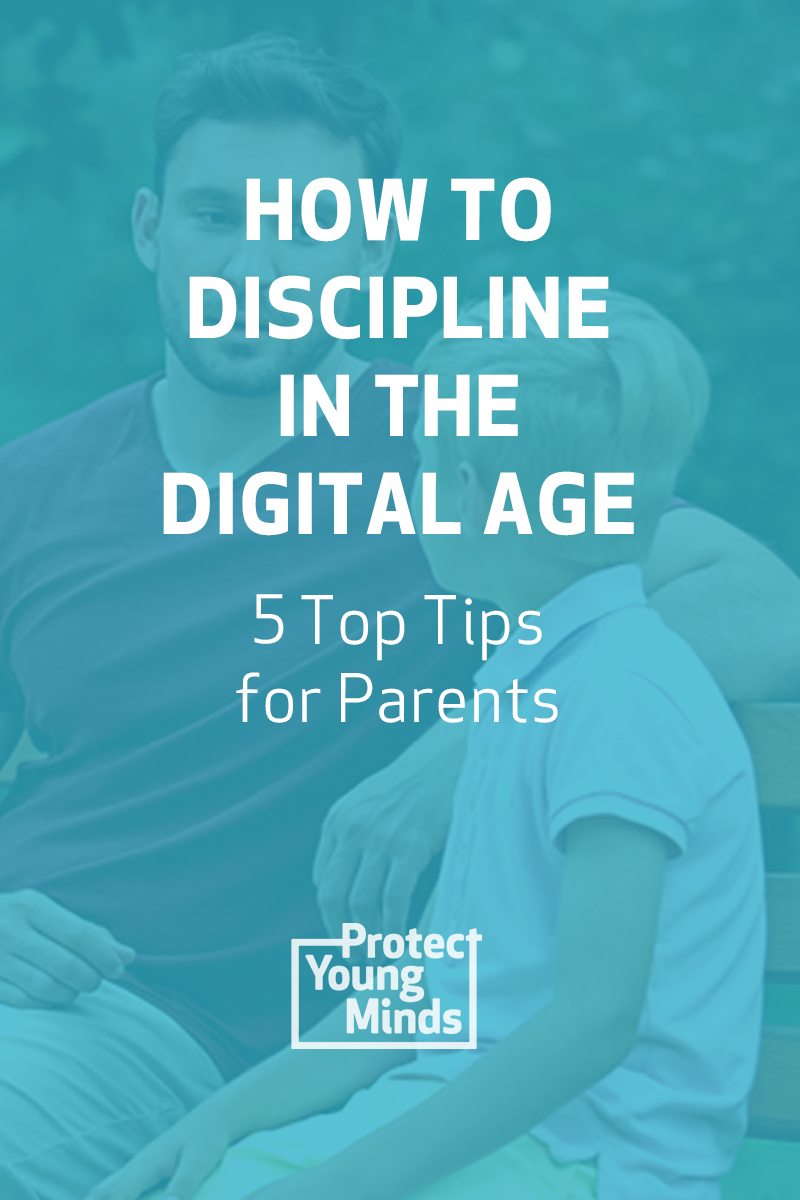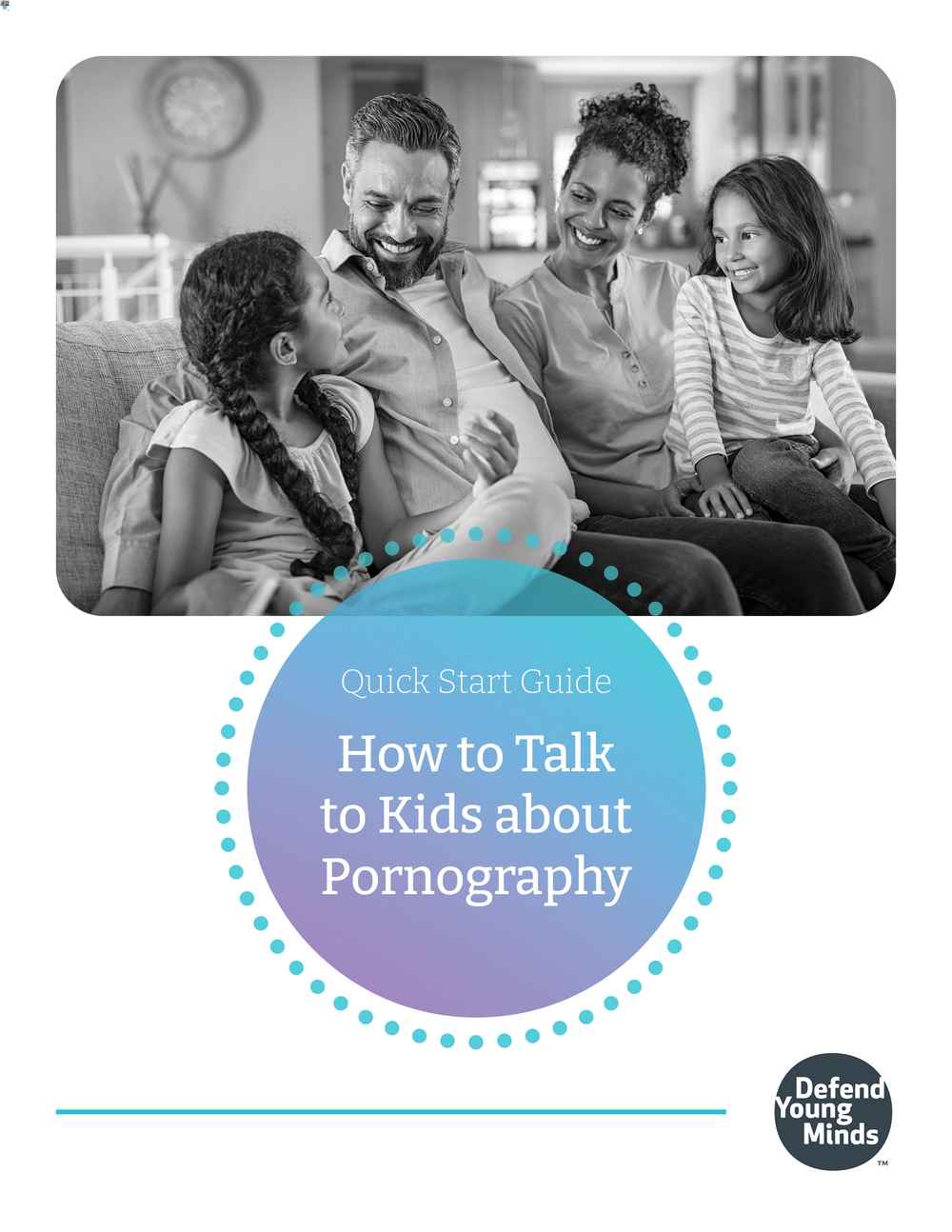
How to Discipline in the Digital Age: 5 Top Tips for Parents
The word discipline literally means, “Training to ensure proper behavior.” When it comes to pornography, discipline is training to ensure safe behavior. All of us want our kids to be safe, but how do we achieve safety from pornography in a digital age?
The 5 Steps to Successful Discipline in the Digital Age
Prevention science has revealed five steps to helping children avoid harmful behaviors like pornography use. These steps will help us see what effective discipline looks like.

1. Build the parent-child bond.
Developing a strong parent-child relationship is the first step to porn prevention. Most of us understand that discipline in the absence of a strong parent-child bond will backfire.
So, even before we try to make technology safe we build a strong foundation of close family relationships. Without such a bond our children are likely to rebel against our guidance rather than follow it.
Related: Helping the Kid Who Doesn’t Want Help
2. Set clear boundaries.
We need to make it clear exactly what we expect our children to do and not do. This includes:
- Setting limits on screen time
- Defining where devices can be used in the house
- Discussing what kind of content is allowed.
We can also set the expectation that we talk about our feelings when we are anxious and disclose times when we see sexualized content. It is only fair to our children that we are very clear on what we expect them to do.
One tip about boundaries: Don’t overload children with a lot of new boundaries all at once. Even if we think of new boundaries to protect our kids, we can introduce one or two at a time and allow time between to get used to the new rules. Even though we may feel desperate to protect our children, they are usually capable of remembering just a few new rules at a time.
Related: Boundaries: Helping Kids Feel Safe
3. Monitor behavior.
We should know what our kids are doing, both online and offline. Digital media is not the only way our children may be exposed to sexualized content. Inappropriate content can be in magazines or sexualized jokes that children may tell each other.
Of course, we need to know what our children are doing with digital media.
Areas to keep tabs on:
- Shows they’re watching
- Video games the’re playing
- Music they're listening to
- What they’re doing through any social media they have access to
It’s important to have conversations with your kids about these things.
It can seem overwhelming to monitor what your child is doing on digital media. Bark is a fantastic tool to help parents monitor and filter.
4. Enforce consequences.
When we don’t enforce boundaries it will feel to our children like there are no boundaries at all. Boundaries without consequences feel more like suggestions than rules. Providing consequences is the power behind discipline. We will discuss how to do this effectively in a moment.
5. Give positive reinforcement.
It is equally important that we give positive feedback when our children behave appropriately. For example, when we see our child look away when something suggestive appears on a show we should praise them. When they tell us they were exposed to pornography we thank them for telling us. Any time we want children to repeat a behavior, we praise that behavior.
Consequences vs Punishment
When I hear the word “discipline” I usually think about providing consequences when rules are broken. What I have to keep in mind is that consequences are different than punishment. Punishment is not very effective in preventing future rule breaking by our children.
Punishment
Punishment is when we inflict some kind of pain when a rule is broken. In most cases the pain is emotional, not physical, as in taking away something a child really likes. In punishment the “pain” is not related to the violation.
For example, if our child is caught looking at sexual content alone, punishment might be something like grounding them from spending time with friends. In this example, being with friends had nothing to do with the child breaking a rule so this is punishment, not a consequence. To our children, punishment can feel mean. This harms the parent-child bond, which is not the result we want.
Consequences
Consequences are not intended to inflict pain but to protect. So if our child accesses sexual content on a device, we might protect them by taking the device away or restricting access to it. In this example the consequence was directly related to the boundary that had been broken. Our children can understand this, even if they don’t like it.
Discipline to Increase Self-Control
There is another aspect to discipline besides enforcing boundaries. If discipline means training to ensure proper (safe) behavior, it should also include helping our children be better at doing the right thing. As we all know, doing the right thing is not always doing what we wish we could do.
One way to help our kids be more inclined to do the right thing is to teach them WHY the boundaries are there. When we just tell a child they can’t do something, it makes them more curious.
When we tell kids WHY they are more inclined to avoid a harmful situation. At minimum, they will go into the situation knowing why the boundaries are there.
This is why it’s so important to teach our kids about the harms of pornography instead of just telling them it’s bad.
Another way to increase self-control is to provide times when we purposefully make our children wait to get something they want.
The digital age our children are growing up in teaches them they can have anything they want right now.
Instead of just giving our kids things they want right away, we can have them work towards earning it or wait until a special occasion to give it to them as a gift.
[[CTA]]
Next Steps for Parents
Here are some questions for parents to consider to see where your discipline strengths and weaknesses are. As you identify things your family could work on, I suggest choosing one at a time.
- Have we set clear boundaries for our family? Perhaps have a family conversation about this. Ask your children what boundaries they think should be in place. They may surprise you with stronger boundaries than you would have put in place.
- Do we know what our children are doing offline? Ask your children what their friends talk about and do. You might share some inappropriate things our own childhood friends said and did to demonstrate it’s okay to be honest.
- Do we know what our children are doing online? Ask your kids what they’re seeing online, what music they listen to, what shows they watch. If they tell you something that alarms you, rather than lecture you can ask what they think about the content they are interacting with. You might ask, “Who would you not not want to know what you heard/saw and why is that?” or “Are these songs/images/words who you want to be?” Do a checkup on how your family is filtering and monitoring devices.
- What are the consequences for violating the boundaries we’ve set? You could do this as parents or involve your children by asking for their thoughts. What are consequences that protect rather than just inflict pain?
- What are our children already doing that is good that we could compliment? Is there something we could do to show our appreciation for the rules they are following? How can we let them know we notice their healthy behavior?
Discipline is really needed in our homes in this digital age of instant reward. We don’t have to be afraid of it when we understand discipline is not punishment but protecting and training. Changing our mindset and explaining that to our kids can make a big difference. Remember, change doesn’t have to happen all at once. Just choose one thing at a time.

.png)
.png)
Brain Defense: Digital Safety Curriculum - Family Edition
"Parents are desperate for concepts and language like this to help their children. They would benefit so much from this program - and I think it would spur much needed conversations between parents and children.” --Jenet Erikson, parent







.jpeg)



